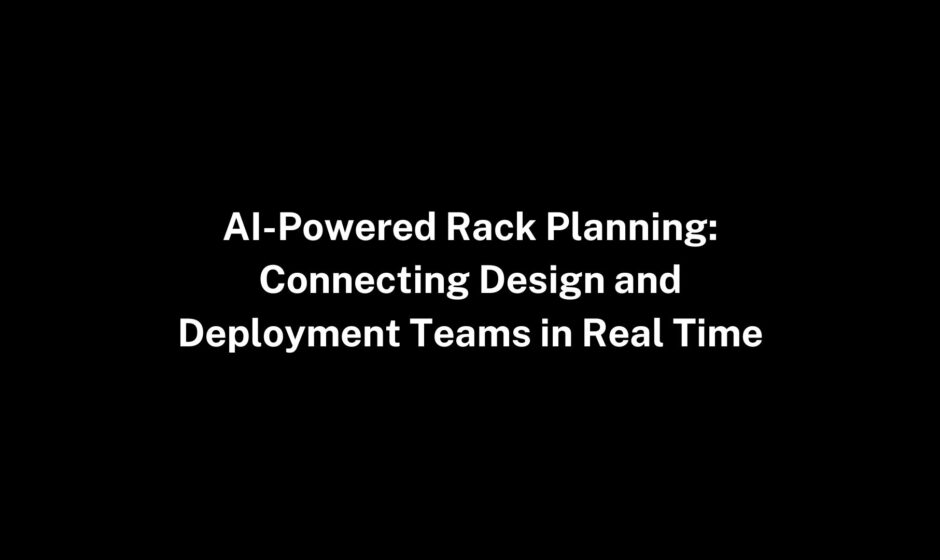As AV and IT systems become more complex, the gap between design and deployment teams often results in miscommunication, rework, and lost productivity. But what if your team could bridge that gap—seamlessly and in real time? Enter AI-powered rack planning, an innovative approach that uses intelligent software to connect designers and installers through a single, unified workflow.
At the core of this transformation is rack diagram software—a tool that has evolved from static schematics to a dynamic platform powered by artificial intelligence. This blog explores how AI is revolutionizing rack planning by enhancing communication, accuracy, and efficiency between AV design and deployment teams.
The Disconnect Between Design and Deployment
Traditionally, the design team builds detailed system drawings and rack layouts, which are handed off to the field team for implementation. But without real-time feedback or collaboration tools, this handoff is fraught with issues:
-
Racks are built differently than planned due to misunderstood drawings
-
Equipment compatibility issues are discovered too late
-
Cable management is neglected or improvised
-
Critical changes made on-site never make it back to the design file
This siloed workflow wastes time, increases costs, and affects the system’s long-term reliability.
How AI Is Changing the Rack Planning Process
With AI-driven rack diagram software, these problems can be tackled head-on. Here’s how:
1. Intelligent Auto-Routing and Equipment Placement
AI algorithms can automatically place devices in the rack based on best practices such as:
-
Grouping by function (e.g., audio vs. video vs. control)
-
Managing heat loads by spacing high-heat devices
-
Prioritizing front-access equipment for maintenance
This reduces the back-and-forth between engineers and installers over optimal layouts.
2. Real-Time Collaboration and Cloud Sync
AI-powered rack diagram software includes live collaboration features, enabling design and deployment teams to:
-
Share updates instantly
-
Leave tagged comments on specific devices or connections
-
Sync changes from the field (e.g., updated device location) back to the master design
This creates a single source of truth, accessible from anywhere.
3. Dynamic Cable Management
AI can plan and visualize cable paths inside the rack, factoring in:
-
Cable length constraints
-
Rear panel access
-
Avoidance of interference between power and signal cables
This enhances install quality and simplifies troubleshooting.
4. Auto-Generated Documentation
Once your rack design is complete, AI tools can instantly produce:
-
Bill of Materials (BOM)
-
Wire labels
-
Elevation diagrams
-
Network maps
These documents are always up-to-date with the latest changes, ensuring consistency across teams.
5. Predictive Alerts and Design Validation
AI doesn’t just draw—it thinks. It validates your rack layout against real-world constraints, alerting you if:
-
A rack is overloaded in terms of power or heat
-
Devices are out of reach of control processors
-
Redundant systems are not properly isolated
This early validation saves time and money by catching issues before deployment.
Read more: https://doomelang.com/read-blog/104391
Why Rack Diagram Software Is Central to AI-Powered Planning
AI features are only useful when built into an intuitive and robust platform—and that’s where rack diagram software comes in. The best solutions combine drag-and-drop interfaces with AI-driven recommendations, real-time collaboration, and seamless cloud integration.
Here’s what makes AI-powered rack diagram software different:
-
Design-Centric: Built for system architects to plan AV and IT racks with precision
-
Field-Ready: Provides installers with mobile access to real-time designs
-
AI-Augmented: Offers smart suggestions, predictive warnings, and auto-layout features
-
Collaborative: Acts as a shared workspace between design, project management, and install teams
Use Case: Corporate Conference Room Deployment
Let’s say a company is building a 10-room video conferencing suite. The AV design team uses AI-powered rack diagram software to create a standard rack layout featuring:
-
Network switch
-
Control processor
-
DSP
-
Video matrix switch
-
Amplifiers
Once the base rack is designed:
-
AI auto-places the components based on power and heat guidelines.
-
Field installers receive live access to the rack plan via a mobile app.
-
On-site changes, like replacing an amplifier model, are logged in real time.
-
Updated documentation is generated instantly, so no manual edits are needed.
-
Project managers track progress and approvals in the same software environment.
This collaborative approach reduces installation time, eliminates guesswork, and ensures each room has an identical, properly installed rack system.
XTEN-AV: Leading the Charge in AI Rack Design
One example of next-gen rack diagram software is XTEN-AV, which offers a comprehensive AI-powered platform tailored for AV professionals. Its rack design tools are integrated with its schematic, proposal, and project management features—creating a seamless experience from concept to installation.
With XTEN-AV, users can:
-
Auto-generate rack layouts from AV system schematics
-
Receive AI-driven layout and wiring recommendations
-
Share and annotate rack diagrams with team members
-
Export high-resolution drawings and documentation in one click
This end-to-end solution helps AV firms eliminate silos, reduce errors, and increase profitability.
The Future: Predictive Design and Maintenance
Looking ahead, AI-powered rack diagram software will evolve to:
-
Recommend hardware based on system needs and past projects
-
Simulate power and thermal conditions in real time
-
Integrate with Building Information Modeling (BIM) systems
-
Provide predictive maintenance alerts based on equipment age, usage, and environmental data
This represents a shift from “design-and-deploy” to “design, deploy, and optimize”—changing how AV and IT teams plan and manage infrastructure.
Conclusion
AI-powered rack diagram software is not just a design tool—it’s a collaboration platform that brings AV designers, project managers, and field installers together in real time. By enabling intelligent equipment placement, dynamic cable routing, live updates, and predictive alerts, it helps teams move faster and with greater accuracy from concept to completion.
If you’re managing AV projects with complex racks, distributed teams, or tight timelines, now is the time to embrace AI in your workflow. The result? Smarter designs, smoother deployments, and systems that simply work better.



